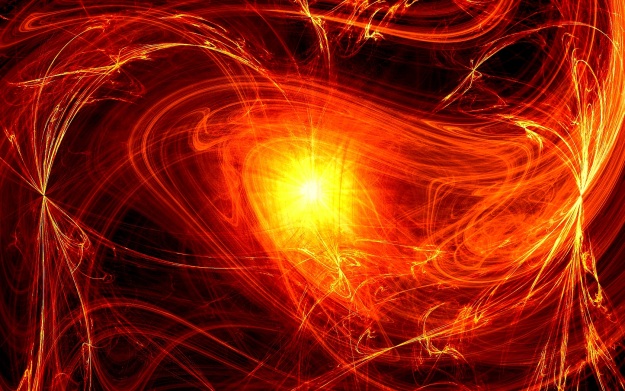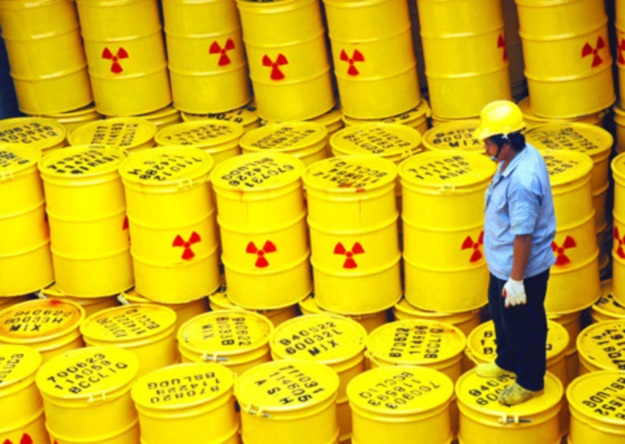New research from a team of scientists and engineers at the University of Michigan and Princeton has resulted in the discovery of a kind of magnetic behavior that could help make nuclear fusions a bit easier.

Before we get into what they discovered, it’s important to understand how fusion works, and why it’s not in widespread use just yet.
So, we have nuclear energy, and right now fission is the only way we can really get steady energy from it. The problem with fission, though, is that it leaves behind radioactive waste that needs to be stored safely.

Fusion, on the other hand, generates helium, an element that’s not only harmless, but also needed, as it’s fast becoming scarce.
To put things into perspective, 250 kilograms of fusion fuel can match the energy production of 2.7 million tons of coal.
So fusion, in a layman’s explanation sort of way, is the ultimate goal of nuclear energy. The reason why it’s not in widespread use yet is because it’s hard to achieve due to how difficult it is to get a fusion reaction going.
“We have to compress the fuel to a temperature and density similar to the core of a star,” explained Alexander Thomas, assistant professor of nuclear engineering and radiological sciences at the University of Michigan.
Once these conditions are achieved, the hydrogen begins to fuse into helium. It’s basically how young stars burn — compressed by their own gravity.
Here on Earth, though, more energy ends up being put into pushing the fuel atoms together then what we end up getting out of the material.
This is where the group’s discovery in magnetic fusion comes in. With this method, magnetic fields are used to trap the fuel (made of hydrogen atoms with extra neutrons) in a magnetic bottle, if you will. Sounds simple enough, but the problem with past efforts is the inertial confinement of the fusion needs to be done in a way that heat is delivered evenly across the surface of the fuel pellet; doing this will cause the top to literally blow off in a way that leads to the rest of the pellet imploding, and the fuel fusing together.
“One of the concerns with nuclear fusion is to squeeze this very spherical fuel pellet perfectly into a very small spherical pellet,” said Archis Joglekar, a doctoral student in nuclear engineering and radiological sciences.
In order to avoid pushing the ball of fuel into an irregular shape that will lead to it not igniting, the fuel needs to be positioned in such a way that it is exposed to a uniform heat sources that will cause its surface layer to evaporate all at once. When this happens, equal pressure is applied to all sides of the pellet, leading it to shrink to one thousandth of its original volume which, in turn, leads to the aforementioned fuel fusing process.
The group set out to figure out a way in which they could apply even heating to the pellet.
They started out by setting up 200 laser beams to target and hit the inside of a hollow metal cylinder with the fuel pellet sitting at its center.
The problem with this setup was that the light energy from the laser, which was being converted to heat in the metal in the way of electrons, was getting trapped in magnetic fields created by the laser spots. The confined electrons could not fuse together with the other laser spots, thereby limiting the “evenness” of the heat, and leaving cold spots throughout the rest of the cylinder.
Upon closer analysis, the group discovered that when the laser light hit the metal, it turns some of the surface metal into plasma — basically a soup of electrons and free atomic nuclei. These “hot electrons” it turns out, in an effort to get to cooler areas, are able to actually push the magnetic fence outward.
Using this information, the team showed in their report that they were able to use the flow of the hot electrons to drive the magnetic fields around neighboring laser spots, causing them to fuse together, and essentially opening channels through which electrons could flow to cooler areas.

Top shows how early in the heating, magnetic fields (black lines) prevent heat from flowing easily between the two laser spots (yellow). The bottom half shows later in the heating, the moving magnetic fields continually connect and provide a channel for heat to flow between the two laser spots.
“Now there's a clear path for the electrons to move into what would otherwise be the cold region,” Joglekar said.
The group believes that designers of inertial fusion ignition systems will be able to use their method to place the laser spots in such a way that they’ll be able to heat up the cylinder more quickly and efficiently.
The group’s paper, “Magnetic reconnection in plasma under inertial confinement fusion conditions driven by heat flux effects in Ohm's law,” is published in Physical Review Letters .
Story via: umich.edu
Advertisement
Learn more about Electronic Products Magazine






